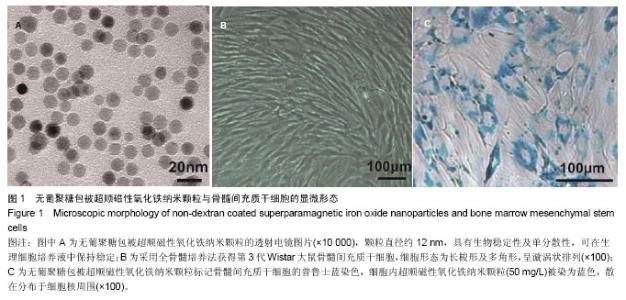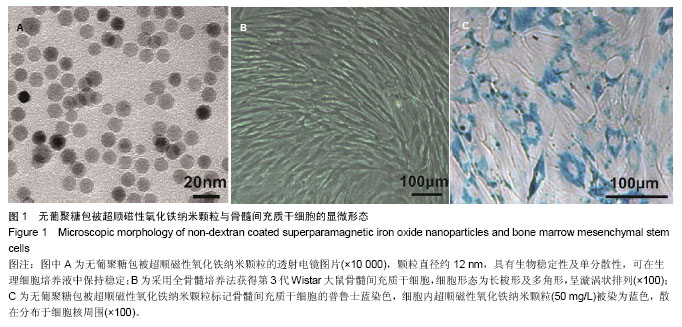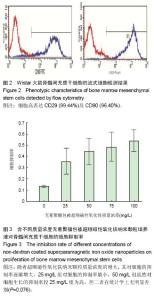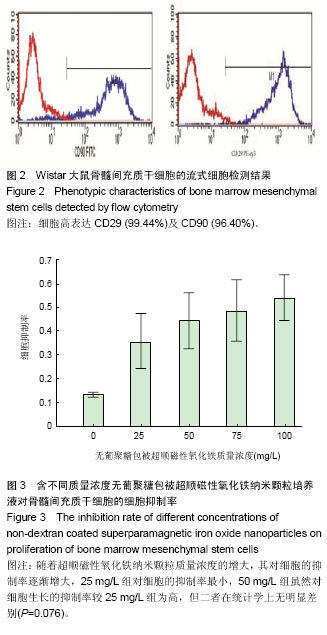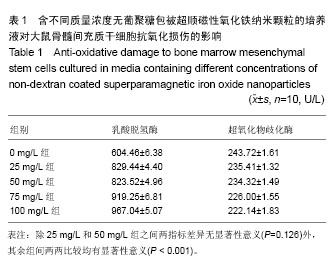| [1] Ouyang HW,Cao T,Zou XH,et al.Mesenchymal stem cell sheets revitalize nonviable dense grafts: implications for repair of large-bone and tendon defects. Transplantation. 2006;82(2):170-174.
[2] He X,Chen Y,Wang K,et al.Selective separation of proteins with pH-dependent magnetic nanoadsorbents. Nanotechnology.2007;18:365604.
[3] Buyukhatipoglu K,Jo W,Sun W,et al.The role of printing parameters and scaffold biopolymer properties in the efficacy of a new hybrid nano-bioprinting system. Biofabrication. 2009; 1(3):035003.
[4] Leem G,Zhang S,Jamison AC,et al.Light-induced covalent immobilization of monolayers of magnetic nanoparticles on hydrogen-terminated silicon.ACS Appl Mater Interfaces.2010; 2(10):2789-2796.
[5] Kanczler JM,Sura HS,Magnay J,et al.Controlled differentiation of human bone marrow stromal cells using magnetic nanoparticle technology.Tissue Eng Part A.2010; 16(10):3241-3250.
[6] Huang DM,Hsiao JK,Chen YC,et al.The promotion of human mesenchymal stem cell proliferation by superparamagnetic iron oxide nanoparticles.Biomaterials. 2009;30(22):3645-3651.
[7] Lellouche JP,Periman N,Joseph A,et al.New magnetically responsive polydicarbazole magnetite nanoparticles.Chem Commun.2004;(5):560-561.
[8] 梁文英,莫润阳,郑敏.SPIO磁性标记细胞技术研究进展[J].青海师范大学学报:自然科学版,2010,26(1):21-24.
[9] Rath SN,Nooeaid P,Arkudas A,et al.Adipose- and bone marrow-derived mesenchymal stem cells display different osteogenic differentiation patterns in 3D bioactive glass-based scaffolds.J Tissue Eng Regen Med.2013. doi: 10.1002/term.1849.
[10] Zeng G,Wang G,Guan F,et al.Human amniotic membrane-derived mesenchymal stem cells labeled with superparamagnetic iron oxide nanoparticles: the effect on neuron-like differentiation in vitro.Mol Cell Biochem.2011; 357(1-2): 331-341.
[11] Jiang J,Gu HW,Shao H,et al.Bifunctional Fe3O4–Ag Heterodimer Nanoparticles for Two-Photon Fluorescence Imaging and Magnetic Manipulation.Adv Mater.2008;20(23):4403-4407.
[12] Yan SG,Zhang J,Tu Q,et al.Transcription factor and bone marrow stromal cells in osseointegration of dental implants.Eur Cell Mater.2013;26:263-270; discussion 270-271.
[13] Li M,Li S,Yu L,et al.Bone mesenchymal stem cells contributed to the neointimal formation after arterial injury.PLoS One.2013;8(12):e82743. doi: 10.1371/journal.pone.0082743.
[14] Ritfeld GJ,Rauck BM,Novosat TL,et al.The effect of a polyurethane-based reverse thermal gel on bone marrow stromal cell transplant survival and spinal cord repair. Biomaterials. 2014;35(6):1924-1931.
[15] Zheng L,Chu J,Shi Y,et al.Bone marrow-derived stem cells ameliorate hepatic fibrosis by down-regulating interleukin-17.Cell Biosci.2013;3(1):46.
[16] Hauger O,Frost EE,vanHeeswijk R,et al.MR evaluation of the glo-merular homing ofmagnetically labeled mesenchymal stem cells in a ratmodel ofnephropathy.Radiology.2006; 238(1):200-210.
[17] Sun S,Chen G,Xu M,et al.Differentiation and migration of bone marrow mesenchymal stem cells transplanted through the spleen in rats with portal hypertension.PLoS One. 2013;8(12):e83523.
[18] Wu W,Chen B,Cheng J,et al.Biocompatibility of Fe3O4/DNR magnetic nanoparticles in the treatment of hematologic malignancies.Int J Nanomedicine.2010;5:1079-1084.
[19] Wang J,Chen Y,Chen B,et al.Pharmacokinetic parameters and tissue distribution of magnetic Fe3O4 nanoparticles in mice.Int J Nanomedicine.2010;21:861-866.
[20] Daldrup-Link HE,Rudelius M,Oostendorp RAJ,et al.Targeting of hematopoietic progenitor cells with MR contrast agents. Radiology.2003;228(3):760-767.
[21] Arbab AS,Yocum GT,Kalish H,et al.Efficient magnetic cell labeling with protamine surface complexed to ferumoxides for cellular MRI.Blood.2004;104(4):1217-1223.
[22] Bulte JW,Douglas T,Witwer B,et al. Magnetodendrimers allow endosomal magnetic labeling and in vivo tracking of stem cells.Nat Biotechnol.2001;19(11):1141-1147.
[23] Sosnovik DE,Nahrendorf M,Weissleder R.Magnetic nanoparticles for MR imaging: agents, techniques and cardiovascular applications. Basic Res Cardiol. 2008; 103(2): 122-130.
[24] Barrett T,Kobayashi H,Brechbiel M,et al.Macromolecular MRI contrast agents for imaging tumor angiogenesis.Eur J Radiol. 2006;60(3):353-366.
[25] 唐大宗,夏黎明.对比剂的发展史[J].放射学实践,2007, 22(6): 631-633.
[26] van Buul GM,Farrell E,Kops N,et al.Ferumoxides protamine sulfate is more effective than ferucarbotran for cell labeling: implications for clinically applicable cell tracking using MRI.Contrast Media Mol Imaging. 2009;4(5):230-236.
[27] Jing XH,Yang L,Duan XJ,et al.In vivo MR imaging tracking of magnetic iron oxide nanoparticle labeled, engineered, autologous bone marrow mesenchymal stem cells following intra-articular injection.J Bone Spine.2008;75:432-438.
[28] Wang Y,Wang Y,Wang L,et al. Preparation and evaluation of magnetic nanoparticles for cell labeling.J Nanosci Nanotechnol. 2011;11(5):3749-3756.
[29] Yuan F,Dong P,Wang X,et al.Toxicological effects of cigarette smoke on Ana-1 macrophages in vitro.Exp Toxicol Pathol. 2013;65(7-8):1011-1018.
[30] El-Bahr SM.Curcumin regulates gene expression of insulin like growth factor, B-cell CLL/lymphoma 2 and antioxidant enzymes in streptozotocin induced diabetic rats. BMC Complement Altern Med.2013;13(1):368. |
